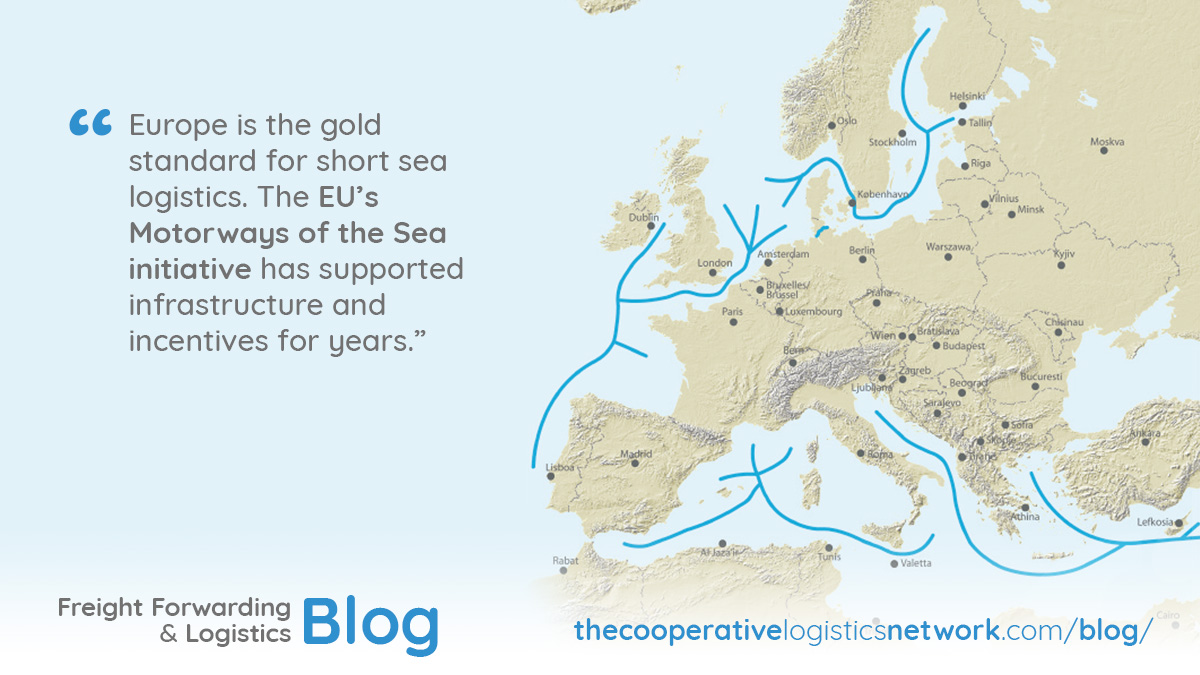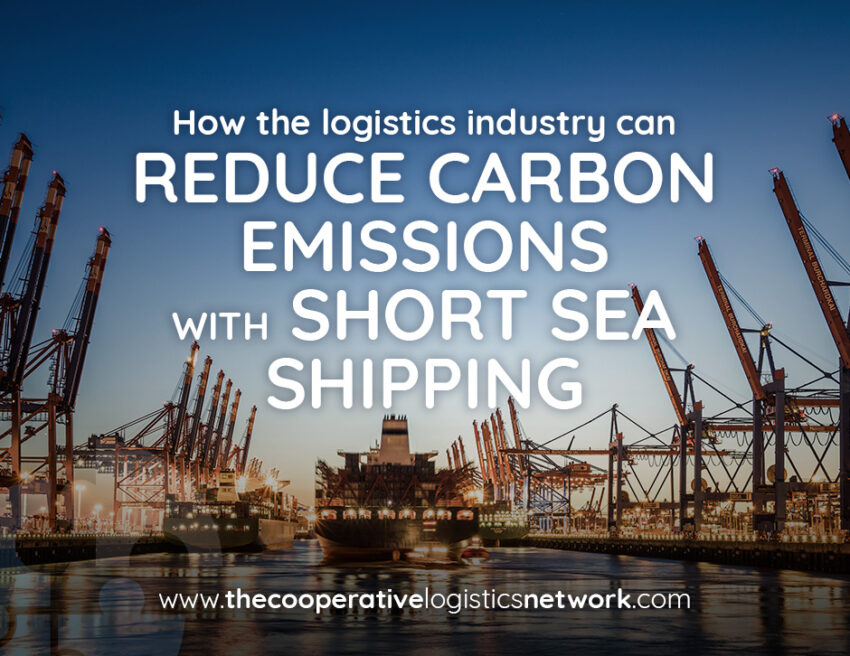The logistics sector is under pressure to clean up its act. Road freight is fast and flexible, but it comes at a cost, rising fuel bills, congested highways, and a heavy carbon footprint. For freight forwarders trying to balance efficiency with environmental responsibility, the old ways aren’t cutting it anymore. That’s where short sea shipping comes in. It offers a practical, lower-emission alternative for regional cargo movement and it’s already proving its value across Europe, Asia, and beyond. As regulations tighten and customers demand greener options, short sea shipping is moving from niche to necessary. In today’s blog we’ll take a look at how this mode is helping the logistics industry cut emissions without compromising on performance.

What is short sea shipping and why it matters now
Short sea shipping can be defined as the transportation of cargo by sea over relatively short distances, typically within the same continent. Think of it as the maritime equivalent of regional trucking. Rather than moving goods on congested highways or through overburdened rail networks, you move containers by vessel between nearby coastal ports. This method is particularly well established in Europe, where a dense network of ports makes it easy to ship goods between countries like Spain, France, Germany, and the Netherlands. But it’s also gaining momentum in the Mediterranean, Baltic, South China Sea, and along parts of the U.S. East Coast.
Why now? Because short sea shipping offers a clear environmental benefit: it produces significantly fewer CO₂ emissions per ton-kilometer than road transport. And that’s becoming harder to ignore because reducing carbon footprint has quickly become one of the top priorities of logistics companies worldwide.
Emissions: How short sea shipping outperforms road freight
Let’s look at the numbers. According to the European Environment Agency:
-
A standard truck emits around 62 grams of CO₂ per ton-km
-
A modern cargo ship emits around 16 grams of CO₂ per ton-km
That’s nearly a 75% reduction in emissions when choosing short sea over trucking. And with new regulations like the EU’s Emissions Trading System (ETS) applying to shipping from 2024 onwards, operators are now investing in even cleaner vessels powered by LNG, biofuels, and eventually green hydrogen. Simply put, short sea shipping isn’t just cleaner. It’s getting cleaner still.
Why freight forwarders should pay attention
This isn’t a policy debate. It’s a real-world shift that freight forwarders and logistics managers need to consider if they want to offer competitive, low-emission transport options. Here’s how short sea shipping can help forwarders meet sustainability targets:
-
Lower Carbon Footprint per Shipment: Ideal for clients with ESG goals or sustainability reporting obligations
-
Easier Compliance with EU and IMO Regulations: Forwarders using maritime routes already aligned with upcoming standards avoid penalties and friction
-
Increased Access to Green Incentives: Governments and ports are rolling out tax breaks, discounts, and subsidies for operators using lower-emission modes
-
Enhanced Client Trust: Clients are increasingly asking how their goods are transported. Offering a cleaner option builds credibility
Many large shippers are starting to ask about CO₂ impact per route. If you can’t provide a low-emission option, you might lose the account.
Combining short sea shipping with other low-carbon modes
Short sea shipping becomes even more powerful when integrated into a multimodal strategy. For example:
-
Ship containers from Hamburg to Bilbao by sea
-
Move them inland by electric rail or hybrid truck
-
Deliver the final leg using low-emission vehicles or city bike logistics
Each part of the chain is optimized for emissions, not just cost or speed. This approach, mixing sea, rail, and sustainable last-mile solutions, is what sets apart forwarders who are thinking ahead. It’s not always about replacing trucking. It’s about strategic substitution: where sea makes sense, use it. Where trucks are unavoidable, make them cleaner.
The challenges (and how to work around them)
Of course, short sea shipping isn’t a silver bullet. There are real-world constraints:
-
Transit time is longer than road in many cases
-
Port availability is limited in certain regions
-
Intermodal connections can be inefficient without proper infrastructure
-
Client expectations may favor speed over sustainability, for now
The way around this is planning. Short sea shipping works best for predictable, non-urgent shipments like bulk goods, FMCG, raw materials, and retail stock replenishment. Educating clients on the benefits is key. Many will accept slightly slower delivery if it means cutting emissions and costs. Plus, tech is improving visibility and tracking across sea routes. With real-time updates and improved ETA accuracy, many of the old arguments about unreliability are falling away.
Real-world adoption: Europe leads, others catching up
Europe is the gold standard for short sea logistics. The EU’s Motorways of the Sea initiative has supported infrastructure and incentives for years. Companies like DFDS, Grimaldi, and CMA CGM run efficient short sea routes that now connect dozens of coastal cities. Asia is catching up, especially in the South China Sea and the Bay of Bengal, where port expansion and trade demand are reshaping intra-regional shipping. In India, for example, the government’s push for coastal shipping is opening new lanes between Chennai, Kochi, and Mumbai. The Americas are slower, but there’s movement. The U.S. Maritime Administration’s Marine Highway Program is promoting coastal routes as a way to reduce highway congestion and emissions, especially on the East Coast.
Final thought: A strategic move for the climate and your business
Freight forwarders can no longer afford to ignore emissions. Customers care. Regulators care. And as carbon taxes and clean transport incentives expand, the cost of inaction will only grow. Short sea shipping won’t replace every truck. But it’s a smart, available tool to move large volumes with fewer emissions and often lower costs. For many regional trades, it’s no longer an alternative. It’s the better option. So the next time a client needs to move cargo from Marseille to Genoa or from Qingdao to Busan, ask: does it really need to go by road? Or can we move it cleaner, quieter, and smarter by sea? That’s where the future of low-carbon logistics is headed.


